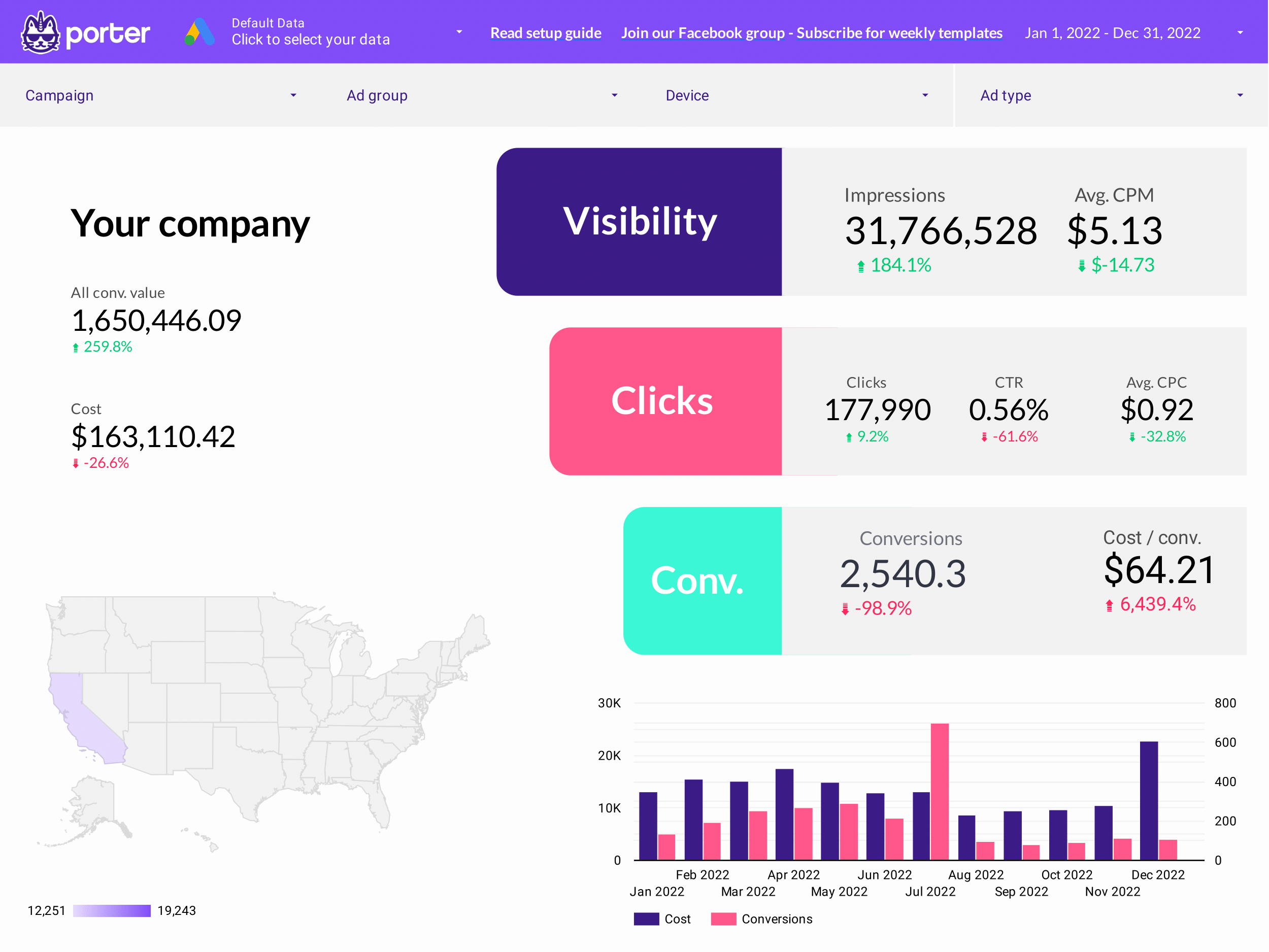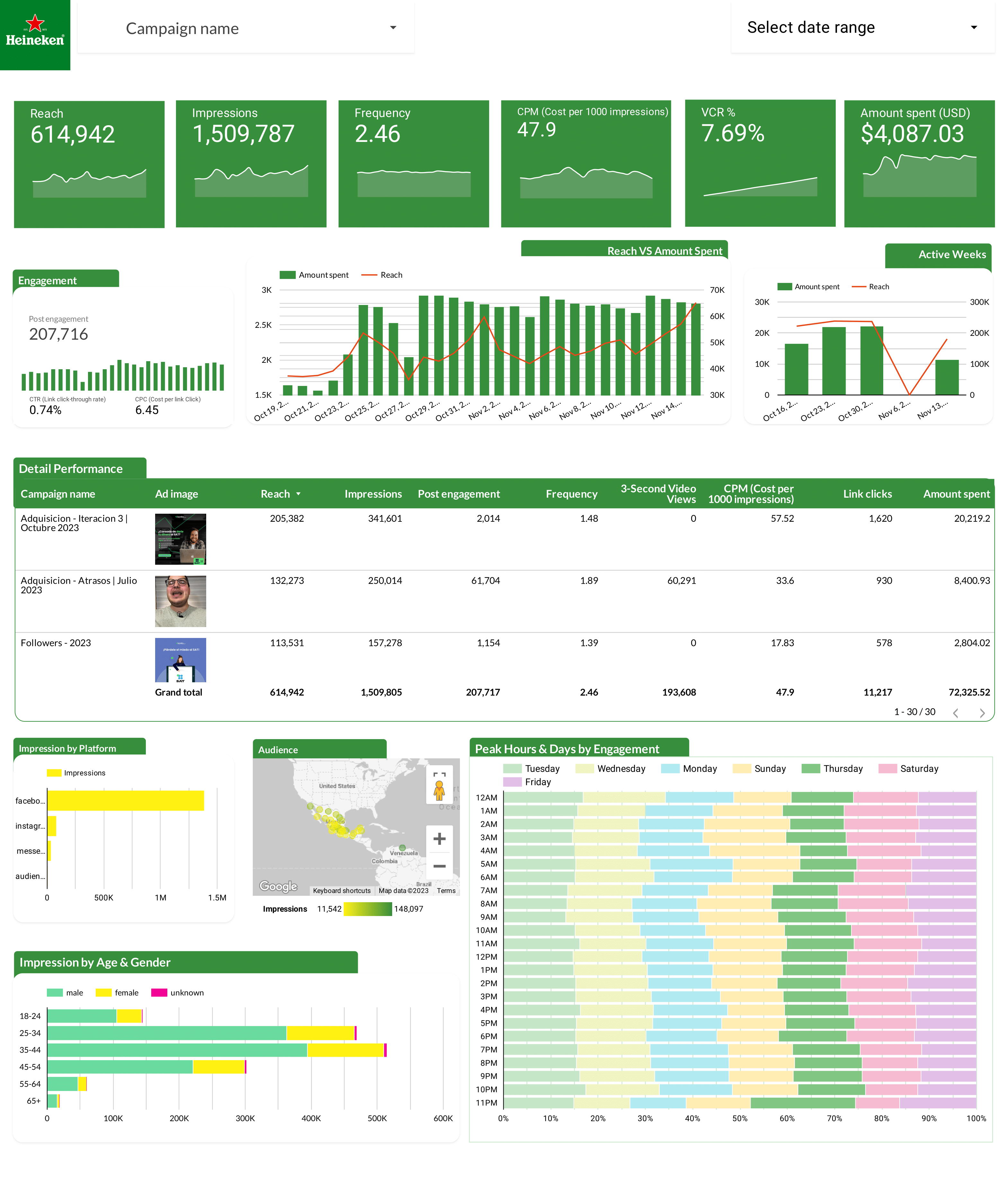
Google Search Console dashboard example
Analyze key metrics such as conversion rate, ROI, and CTR with this Google Search Console dashboard example. Segment data by age, gender, device, and location. Perfect for marketing teams to consolidate SEO strategies and track performance over time, offering specific insights for optimizing your online presence.



















